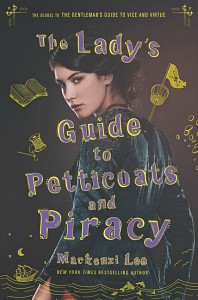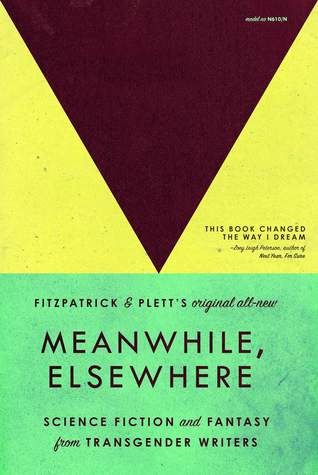[Warning: this review contains plot spoilers and discussions of violence and bigotry depicted in the novel; namely major characters experience misogyny, racism and homophobia in 18th century European and North African settings. Also this book is a sequel to Lee’s The Gentleman’s Guide to Vice and Virtue so beware default spoilers for that book too].
The Lady’s Guide to Petticoats and Piracy is the treat it is due to the three main women at the centre of the novel. Felicity Montague is a well-travelled young white noblewoman in 18th century England who is in exile from her wealthy family and desperately trying to find a school or mentor who will let her train to be a doctor. Of course her gender precludes her admittance to anywhere in the country, or even Europe, despite the fact that Felicity is fiercely committed, highly intelligent, and hardworking. She is led to team up with Sim, a mysterious young black sailor travelling with mutual friends who offers to help Felicity pursue a promising opportunity that’s in continental Europe. Sim has the tenacity to match Felicity’s and both women acknowledge and appreciate the other’s intelligence and individuality. Rounding out the trio is Felicity’s childhood friend, Johanna, a fellow white European noblewoman who loves feminine fashions and frippery as much as studying natural sciences, though her family values her only as someone to marry off. All three of these women exemplify strength, cunning, kindness, creativity and intelligence, and their burgeoning respect for each other, and subsequent friendships, are nuanced and gorgeous.
Sim is a black Muslim woman from Algiers who identifies as attracted to women while Felicity decides she doesn’t like romance with anybody, though she loves her friends passionately. Both women, but particularly the former, are important and beautiful representations in a story set in a colonial 18th century world, and both the WLW and ace/aro themes are very sensitively portrayed. No one meets a grisly end due to their sexual orientation but that doesn’t mean there aren’t a lot of high stakes and adventure, and it’s refreshing that having the one doesn’t mean sacrificing the other. The heroines travel through no less than five or six countries in the course of the book, and have encounters with pirates, dragons, mercenaries, cannon blasts, and menstrual blood stains on ballgowns (surely more terrifying than anything else on that list). The novel consistently feels breathless and urgent while never rushing through plot points and the high stakes always feel legitimate when the women are fighting for what they want and need. The central bond between the three main characters is most of what grounds the action and provides deeper resonance than just a fun “swords-crossed, indignant damsel” sort of caper.
Petticoats is a great book because the women get to drive their own stories, both by being the focus of the book in the first place and because they take charge of their destinies within the narrative. It shouldn’t be groundbreaking that two of these women, at least, are also not straight and this side of their identities is included as an important part of their arcs, but it is. And Sim and several other characters of colour in the story, in addition to multiple disabled characters, are further very welcome evidence that period pieces have no excuse to be exclusively white, male, straight and abled when it is historically accurate and incredibly simple to include diversity. A sequel portraying more of Sim’s adventures on the high seas, with or without Felicity and Johanna, would be another stellar contribution to historical fiction about WLW.



